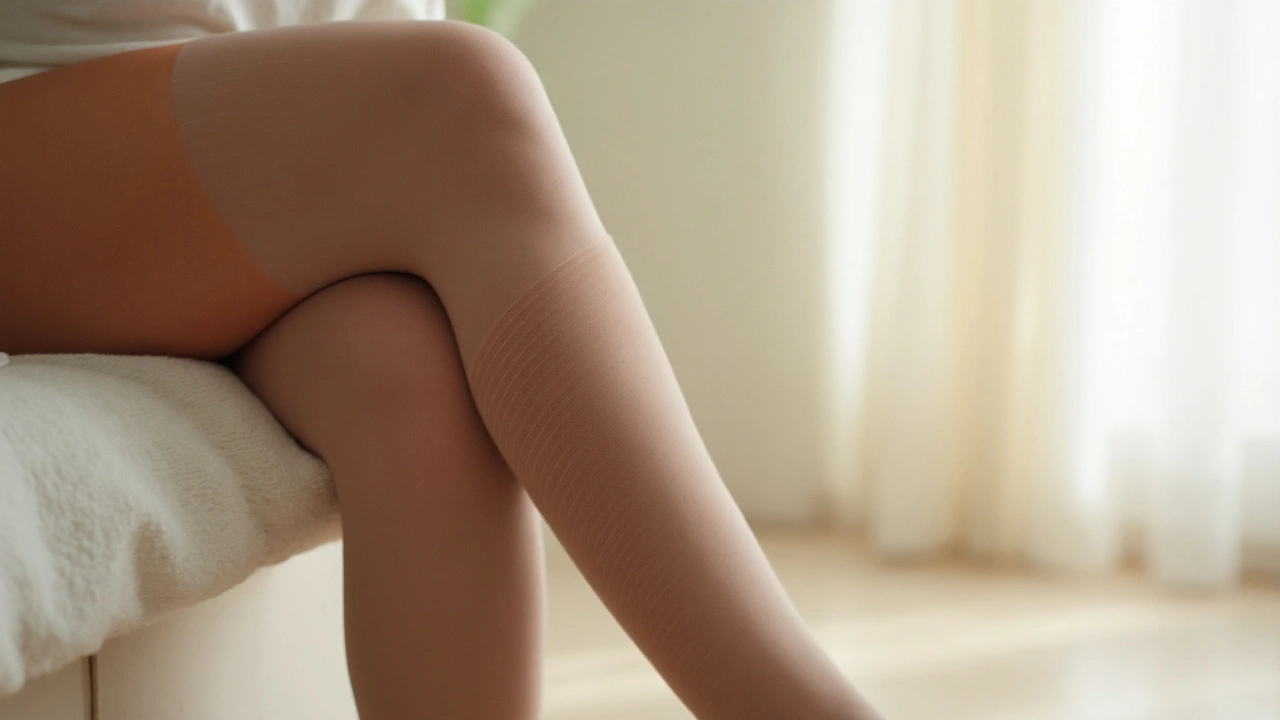Graduated compression means the pressure on your leg is strongest at the ankle and slowly eases as it moves up toward the thigh. This pressure gradient helps blood flow back to the heart, keeping fluid from pooling in the lower legs.
People use graduated compression for many reasons – from easing sore calves after a long flight to managing chronic swelling caused by varicose veins or lymphedema. The right pair can also reduce muscle fatigue for athletes and speed up recovery after workouts.
The magic is in the design. When you put on a compression stocking, the tightest band hugs your ankle, where gravity pulls blood down hardest. As the fabric rises, the pressure drops, allowing the veins to open a bit and push blood upward. This gentle squeeze mimics the muscle pump that your legs normally create when you walk.
Because the pressure is measured in millimeters of mercury (mmHg), you’ll see numbers like 15-20, 20-30, or 30-40 on the label. Lower numbers are good for mild swelling or everyday wear, while higher numbers are meant for medical conditions that need stronger support.
Start by figuring out why you need compression. If you just want a bit of leg comfort on a long trip, a light 15-20 mmHg pair is enough. For chronic venous issues, a medium 20-30 mmHg stocking works better, and for post‑surgery or severe edema, a 30-40 mmHg option may be recommended by a doctor.
Fit matters just as much as pressure. Measure both your ankle circumference and the widest part of your calf, then use the brand’s size chart. A good fit feels snug but not painful – you should be able to slide a finger under the edge without the fabric bunching.
Material choice also affects comfort. Nylon‑spandex blends are lightweight and breathable, while cotton blends feel softer but may wrinkle. Some brands add antimicrobial treatment to keep odors low, which is handy if you wear them all day.
Take care of your stockings to keep the compression level steady. Hand‑wash them in cool water, avoid fabric softeners, and let them air dry flat. Rough handling can stretch the fibers and reduce pressure where you need it most.
In short, graduated compression isn’t a one‑size‑fits‑all solution. Match the pressure, length, and material to your lifestyle, and you’ll notice less swelling, fewer cramps, and quicker recovery after activity.
If you’re unsure which level to start with, talk to a pharmacist or your doctor. A quick chat can save you from buying the wrong pair and getting no benefit at all.
Ready to try it? Grab a pair that fits your needs, wear them correctly, and give your legs the support they deserve. You’ll feel the difference within a few hours, and over time the improvement in circulation can be noticeable.

Explore how compression stockings work, clinical guidelines, risk factors, and a side‑by‑side look at other DVT prevention methods. Get practical tips for safe use.
View more